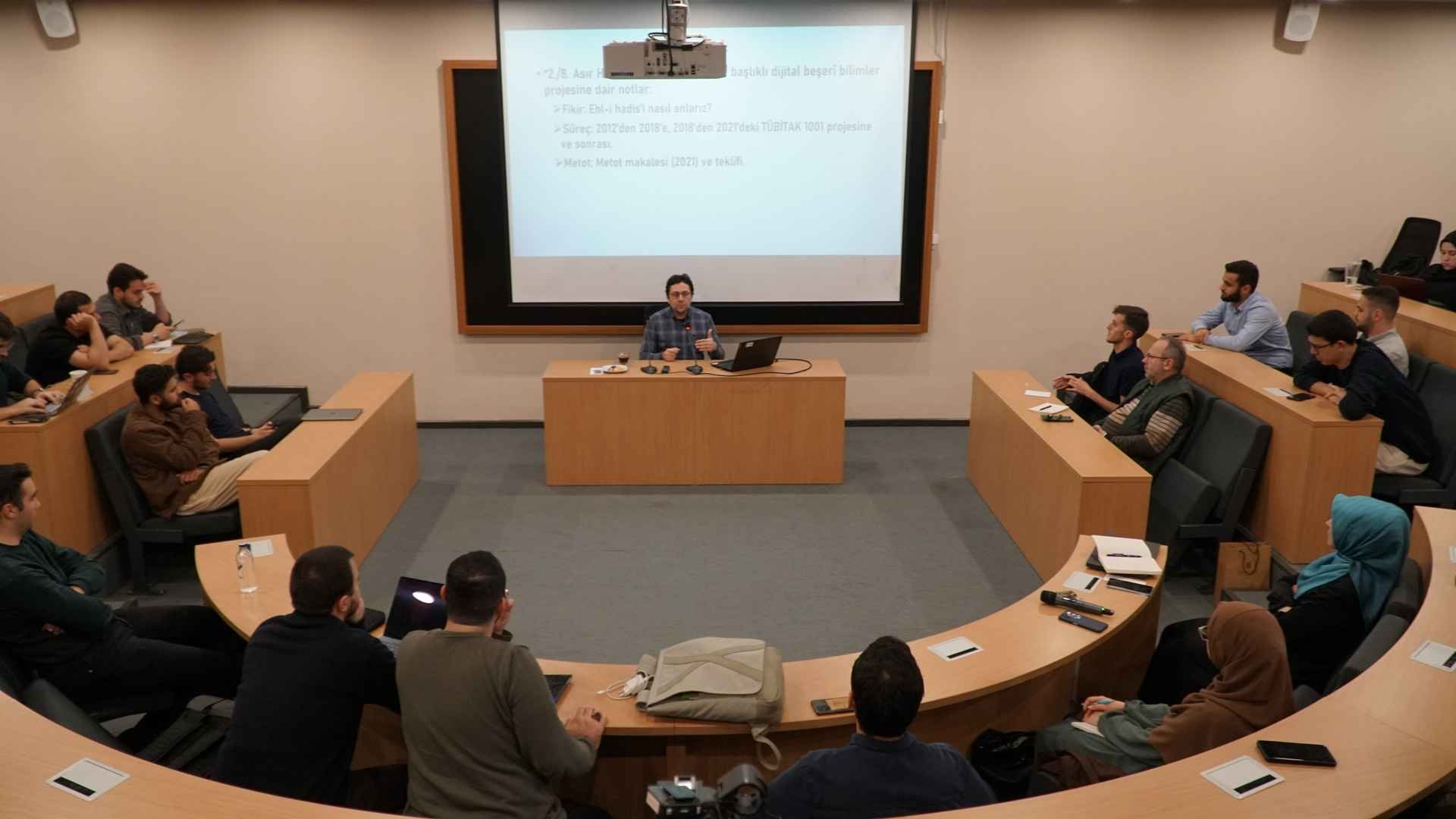


The seventh program of the Islamic Studies Conferences series, organized by the School of Islamic Sciences at Ibn Haldun University, was held on Tuesday, October 28, 2025, at the Media and Events Center, Teoman Duralı Conference Hall, under the title “Digital Humanities and Hadith: From Nisbahs to Early Centers of Islamic Learning.” The conference featured Assoc. Prof. M. Enes Topgül from Marmara University Faculty of Theology as the speaker, offering participants the opportunity to reconsider the geographical, social, and intellectual landscape of Hadith studies through digital methodologies.
In his presentation, Dr. Topgül examined the distribution of early Islamic centers of learning through the study of nisbahs (geographical affiliations) found in Hadith literature. He emphasized that the digitization of classical Hadith sources and the development of new databases allow scholars to visualize the dynamic intellectual and spatial networks of the early Islamic world more clearly. Using practical examples, he demonstrated how tools from digital humanities can be applied to trace the scholarly mobility, educational networks, and intellectual hubs of Hadith transmitters. Dr. Topgül noted that analyzing nisbahs provides more than just geographical data—it also opens up new questions about the spatial organization of knowledge production, Hadith education, and the formation of scholarly social networks. Based on these data, he discussed how cities such as Basra, Kufa, Medina, Nishapur, and Bukhara played distinctive roles in the transmission and teaching of Hadith across different historical periods, using digital mapping techniques to illustrate his findings.
During the Q&A session, participants asked questions regarding the use of databases in Hadith research, digital mapping tools, and text-mining techniques. The discussions highlighted that digital humanities provide not only a technical innovation but also a research approach that allows a renewed understanding of the historical structure of classical Islamic sciences.
The event concluded with strong participant interest and interactive contributions.